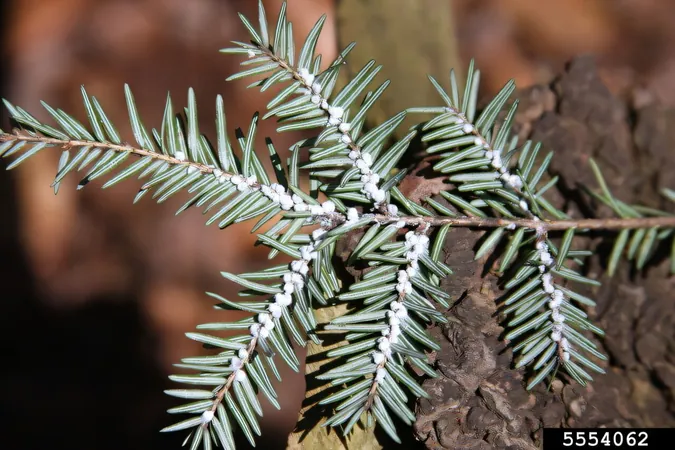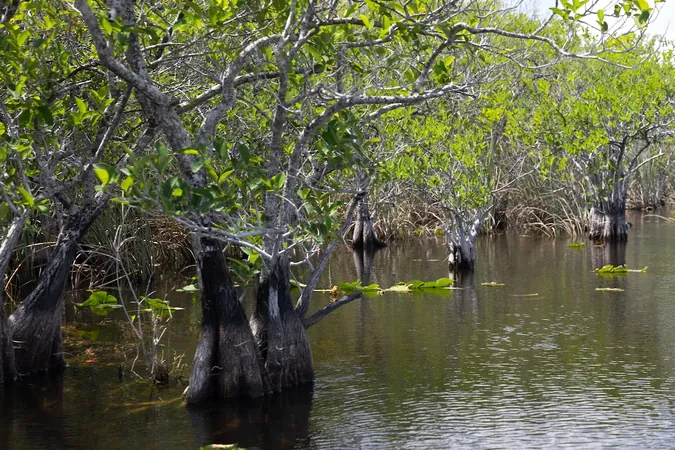
The Battle of the Pests: Why Generalists Cause More Damage While Specialists Take Down Trees
2025-05-09
Author: Ming
Understanding the Dual Threat of Forest Pests
A ground-breaking study published in the journal Forests reveals the urgent need for forest managers to grasp the complex dynamics between nonnative specialist and generalist pests. This knowledge is essential for prioritizing limited resources effectively.
Lead author Qinfeng Guo from the USDA Forest Service explains, "The classification of pests helps us determine where to direct our finite labor and funding to combat their impact most effectively."
The Hemlock Woolly Adelgid: A Silent Tree Killer
One notorious offender, the hemlock woolly adelgid, was accidentally introduced to the U.S. in the 1950s and has since wreaked havoc on eastern forests. While Japan utilizes natural predators to keep its population in check, the eastern U.S. is not so fortunate, leading to catastrophic tree loss. The National Park Service has reported a staggering 80–90% decline in eastern hemlocks at certain locations.
This menacing pest is just one of 66 nonnative species scrutinized in Guo and his team's study, underlining how invasive insects pose the largest threat to forest health.
Specialists vs. Generalists: Who's More Dangerous?
In the realm of forest management, pests are often classified as either specialists—those that target specific host species—or generalists, which can infest numerous species across various families. Surprisingly, the study found that while specialist pests resulted in higher tree mortality, generalists inflicted more widespread non-lethal damage.
Interestingly, newer invasive pests tend to kill more trees than their older counterparts. This could be attributed to the older pests having already eliminated the most vulnerable trees over time, allowing host species to develop some resistance.
The Need for Better Classification Methods
Both Guo and co-author Kevin Potter emphasize the importance of clear classifications for pest management. Currently, there is no standardized method to distinguish between pest types, leading to potentially conflicting results in damage assessments and management strategies.
Their study analyzed the impacts of 66 nonnative pests using two different classification approaches: a binary method (generalist vs. specialist) and a more nuanced specialist-generalist continuum. They discovered that the continuum approach provided more clarity, allowing for better understanding of host responses based on infestation severity.
Preparing for Future Infestations
With invasive pests becoming a permanent issue, it is crucial to deepen our understanding of these threats and bolster management strategies. Guo remarks, "Filling the current gaps in data is essential for predicting and handling future challenges effectively."
As Potter succinctly puts it, “Invasive pests are here to stay, and we need to learn how to manage them.” This study highlights the need for immediate action to protect our forests from the mounting threat of invasive species.



 Brasil (PT)
Brasil (PT)
 Canada (EN)
Canada (EN)
 Chile (ES)
Chile (ES)
 Česko (CS)
Česko (CS)
 대한민국 (KO)
대한민국 (KO)
 España (ES)
España (ES)
 France (FR)
France (FR)
 Hong Kong (EN)
Hong Kong (EN)
 Italia (IT)
Italia (IT)
 日本 (JA)
日本 (JA)
 Magyarország (HU)
Magyarország (HU)
 Norge (NO)
Norge (NO)
 Polska (PL)
Polska (PL)
 Schweiz (DE)
Schweiz (DE)
 Singapore (EN)
Singapore (EN)
 Sverige (SV)
Sverige (SV)
 Suomi (FI)
Suomi (FI)
 Türkiye (TR)
Türkiye (TR)
 الإمارات العربية المتحدة (AR)
الإمارات العربية المتحدة (AR)